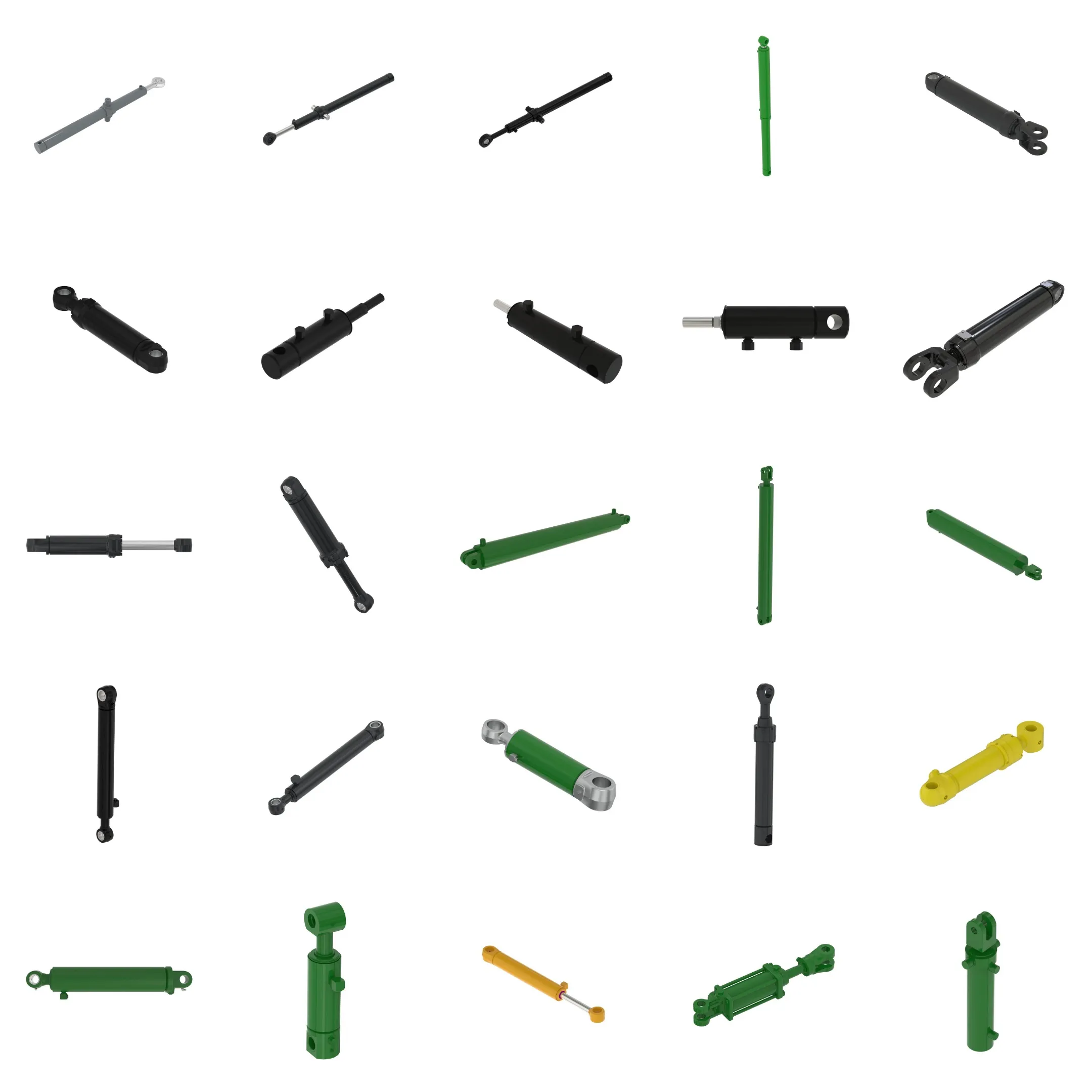Replacement Of AHC21676 Hydraulic Cylinder
Yhtenä hydraulisylinterien valmistajista, toimittajista ja mekaanisten tuotteiden viejistä tarjoamme hydraulisylintereitä ja monia muita tuotteita.
Ota yhteyttä meihin saadaksesi lisätietoja.
Posti:sales@hydraulic-cylinders.net
Valmistaja toimittaja viejä hydraulisylinterit.
Replacement Of AHC21676 Hydraulic Cylinder
Introduction: The Replacement Of AHC21676 Hydraulic Cylinder is a crucial component used in various applications. This hydraulic cylinder plays a significant role in ensuring the proper functioning of equipment. It is designed to replace damaged or worn-out cylinders, restoring the equipment’s performance in a wide range of applications.
Specifications and Models:
- Weight: 84.176 lb
- Height: 3.5 in
- Length: 44.5 in
- Models: M4030, M4040
Features:
- Improved Equipment Performance: Replacing damaged or worn hydraulic cylinders can restore the equipment’s normal operational capabilities, ensuring optimal performance in various applications.
- Enhanced Safety: Regularly replacing hydraulic cylinders reduces safety hazards caused by cylinder failures, ensuring the safety of operators and equipment.
- Overload Protection: Modern cylinder designs often include better overload protection mechanisms, enhancing safety during operation.
- Quick Installation: Contemporary hydraulic cylinders are designed for easy installation and replacement, minimizing downtime.
- Standardized Components: Many hydraulic cylinders are standardized products, making it easier to obtain replacement parts in the market.
We can produce this product, offering a perfect replacement for these hydraulic cylinders.
Applications:
- Excavators: Hydraulic cylinders in excavator arms or buckets may suffer damage or wear over time and require replacement to restore proper operation.
- Cranes: The hydraulic cylinders in crane boom arms are prone to wear due to frequent lifting and lowering, necessitating regular replacement to ensure safety.
- Tractors: Hydraulic cylinders in front-end loader attachments of tractors may experience leaks or diminished performance during constant lifting and tilting operations, requiring replacement.
- Harvesters: During the harvesting process, hydraulic systems endure high pressure, and cylinders may suffer fatigue damage, necessitating timely replacement to maintain work efficiency.
- Automated Production Lines: Hydraulic cylinders are used to control robotic arms and other automated equipment. Cylinder failures can significantly impact production efficiency, requiring immediate replacement.
- Die-casting Machines: In high-pressure and high-temperature environments, hydraulic cylinders may experience performance degradation. Regular replacement ensures product quality.
- Mining Equipment: Hydraulic cylinders are used for lifting and moving heavy loads in mining equipment. Due to harsh working conditions, regular inspections and replacements are necessary to avoid equipment failures.
- Bulldozers: Worn hydraulic cylinders on bulldozer blades can cause a decrease in pushing force, necessitating timely replacement to maintain operational efficiency.
Maintenance Tasks:
- Regular Inspections: Conduct routine inspections to identify any issues or signs of wear in the hydraulic cylinders.
- Proper Lubrication: Ensure appropriate lubrication of the cylinders with the recommended hydraulic oil to enhance their performance and longevity.
- Seal Replacement and Calibration Checks: Regularly replace seals and perform calibration checks to maintain optimal cylinder performance.
During installation, provide proper guidance for aligning the cylinder, recommend using suitable installation brackets to secure the cylinder, and suggest inspection, repair, and replacement procedures. We offer replacement parts and rebuilding services to prolong the lifespan of your hydraulic cylinders.
Safety Considerations and Environmental Factors:
When working with hydraulic cylinders, it is essential to prioritize safety measures. Proper usage of keywords and adherence to safety protocols can prevent potential accidents and ensure a secure working environment.
Troubleshooting and Common Issues:
- Leakage: Inspect the cylinder for any signs of leakage and check the seals for damage or wear. Replace any faulty components.
- Slow or Incomplete Operation: Check the hydraulic fluid levels, inspect the system for blockages or restrictions, and ensure proper lubrication. Adjust or replace components as needed.
- Noise or Vibrations: Excessive noise or vibrations may indicate misalignment or worn-out parts. Properly align the cylinder and replace any damaged components.
We provide troubleshooting tips and solutions to help readers effectively diagnose and resolve issues. Additionally, we offer preventive measures to minimize potential problems.

Design Considerations and Selection Criteria:
When selecting the appropriate hydraulic cylinder, several factors should be considered, including load-bearing capacity, sealing capabilities, durability, safety features, and ease of maintenance. Each aspect plays a crucial role in ensuring optimal performance.
Sealing and Lubrication:
To maintain the performance and longevity of the hydraulic cylinder, various sealing elements such as piston seals and rod seals are utilized. These seals are made from wear-resistant materials such as polyurethane and nitrile rubber. The cylinder body and threaded ends undergo meticulous surface treatment to improve wear resistance. Regular lubrication with the recommended hydraulic oil is essential.
Regular Inspections and Preventive Maintenance:
Regular inspections and preventive maintenance are vital to identify any potential issues and ensure the optimal performance of hydraulic cylinders. Proper installation, lubrication, and adjustment are of utmost importance. Providing guidelines for aligning the cylinder correctly, recommending the use of suitable installation brackets, and suggesting inspection, repair, and replacement procedures are crucial. We offer expert advice, replacement parts, and rebuilding services to enhance the lifespan of your hydraulic cylinders.
Product Installation Guide:
Proper installation is key to achieving optimal performance and longevity of the hydraulic cylinder. Consult the following installation guide for detailed instructions:
1. Ensure the mounting surface is clean and free from debris.
2. Align the cylinder precisely with the mounting brackets and secure it using appropriate fasteners.
3. Connect the hydraulic hoses following the manufacturer’s instructions.
4. Check all connections for leaks and ensure proper tightness.
5. Perform a functional test to verify the correct operation of the cylinder.

Maintenance Tasks:
- Regular Inspections: Conduct routine inspections to identify any issues or signs of wear in the hydraulic cylinders.
- Proper Lubrication: Ensure appropriate lubrication of the cylinders with the recommended hydraulic oil to enhance their performance and longevity.
- Seal Replacement and Calibration Checks: Regularly replace seals and perform calibration checks to maintain optimal cylinder performance.
Tutustu VR-tehtaaseemme:
Tutustu VR-tehtaaseemme seuraavalla kierroksella
Hydraulisylinteri Sovellus:


